NEWS
15 Of The Most Lethal Sniper Rifles In The History Of The World
Published
2 months agoon
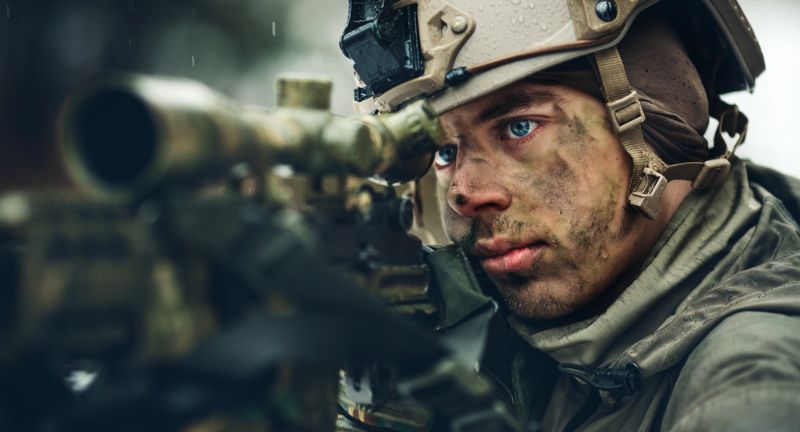
Shutterstock
In the shadows of conflict and the vast stretches of no-man’s land, sniper rifles have emerged as the silent arbiters of fate, transforming the art of warfare with each pull of the trigger. These instruments of precision and death have evolved from simple marksmen’s tools to technological marvels, capable of delivering justice or doom from miles away.
The 15 deadliest sniper rifles ever made stand as a testament to human ingenuity, engineering prowess, and the relentless pursuit of tactical superiority. Each rifle, with its unique history and capabilities, has not only redefined the boundaries of warfare but also the very essence of what it means to be a sharpshooter in the modern era.
Barrett M82/M107
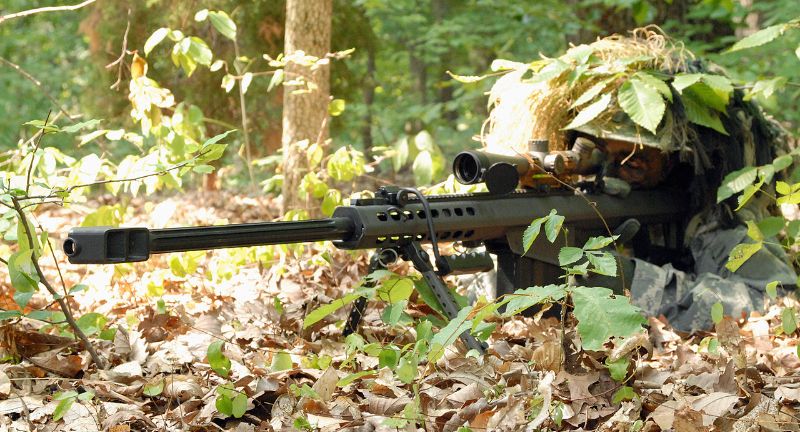
Wikipedia
The Barrett M82, also known as the M107 in its military designation, is an American-made semi-automatic anti-material rifle. Developed by the Barrett Firearms Manufacturing company in the early 1980s, it was designed to destroy sensitive enemy equipment like parked aircraft and radar units. Its .50 BMG caliber rounds are capable of engaging targets over 1,800 meters away, making it a formidable tool in modern warfare. The rifle gained fame during the Gulf War and has been used in various conflicts worldwide.
CheyTac M200 Intervention
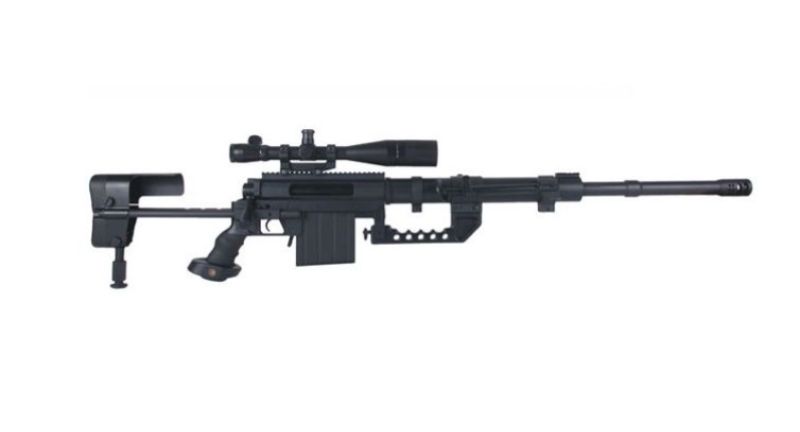
Wikipedia
The CheyTac M200 Intervention, a bolt-action sniper rifle developed by CheyTac LLC, is renowned for its long-range accuracy, with effective engagements reported at distances beyond 2,000 meters. It was introduced in the early 2000s and is chambered for the .408 CheyTac round, specifically designed for long-range shooting. The M200 holds the world record for the best group at a distance of 2,122 meters, demonstrating its exceptional precision. Its sophisticated ballistics computer and wind reading instruments make it a top choice for extreme long-range shooting.
Accuracy International Arctic Warfare (AW)
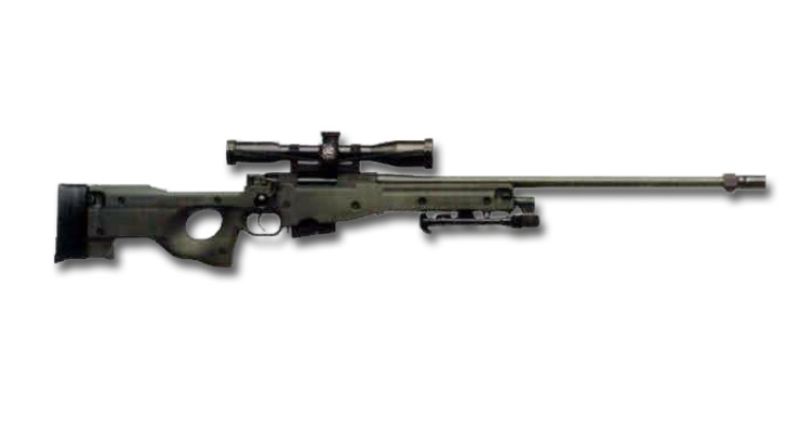
Wikipedia
Developed by the British company Accuracy International in the late 1980s, the Arctic Warfare series was designed to perform with high reliability in cold conditions, as evidenced by its initial deployment with the British Army in the Falklands War. It is known for its exceptional accuracy and robustness, with variants chambered for several calibers, including the popular .308 Winchester and .338 Lapua Magnum. The AW’s design has set a standard in sniper rifle performance, influencing many other rifles in its class. Its variants, especially the AWM (.338 Lapua Magnum) and AWSM (.300 Winchester Magnum), have seen widespread use in military and law enforcement roles globally.
Dragunov SVD
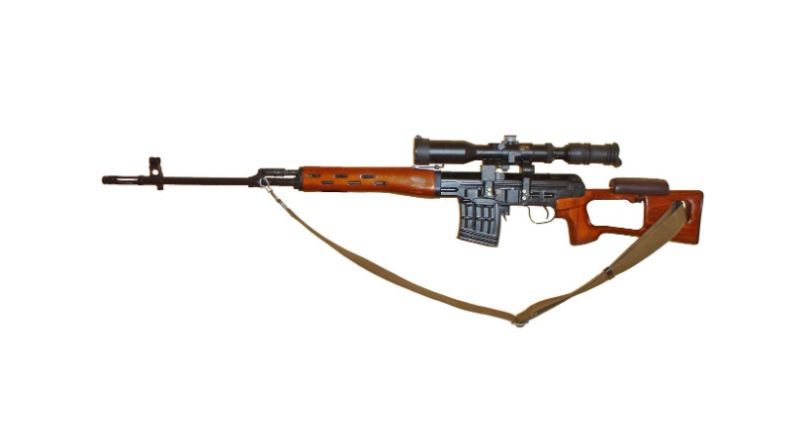
Wikipedia
The Dragunov SVD (Snayperskaya Vintovka Dragunova) is a semi-automatic sniper rifle developed in the Soviet Union in the 1960s by Evgeniy Dragunov. Designed to extend the effective range of infantry squads, the SVD was the world’s first purpose-built military sniper rifle. It fires the 7.62×54mmR cartridge, combining reasonable accuracy with substantial firepower over long distances. Widely used by Soviet and then Russian forces, as well as various other countries, the SVD has seen action in numerous conflicts, proving to be reliable and effective.
M24 Sniper Weapon System
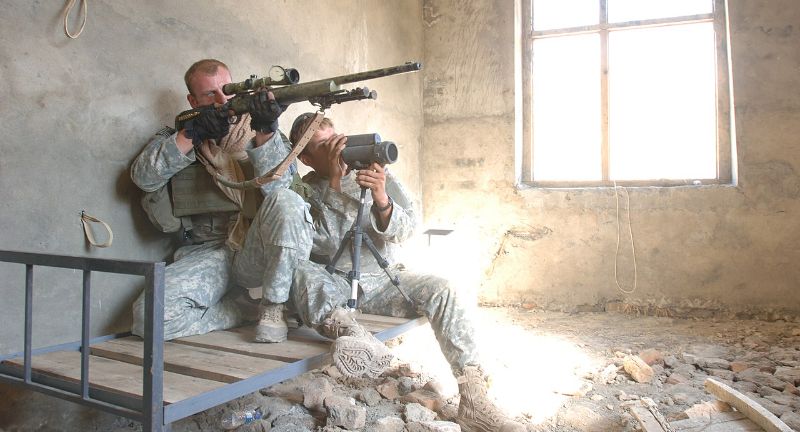
Wikipedia
The M24 Sniper Weapon System is an American bolt-action rifle used by the United States Army and other military services. Developed in the late 1980s from the Remington 700 series of hunting rifles, the M24 was designed for precision and reliability. Chambered primarily in 7.62×51mm NATO, it has served as the standard-issue sniper rifle for the U.S. Army until being replaced by more modern systems. Despite this, the M24 has seen extensive use in various conflicts, earning a reputation for accuracy and dependability.
McMillan TAC-50
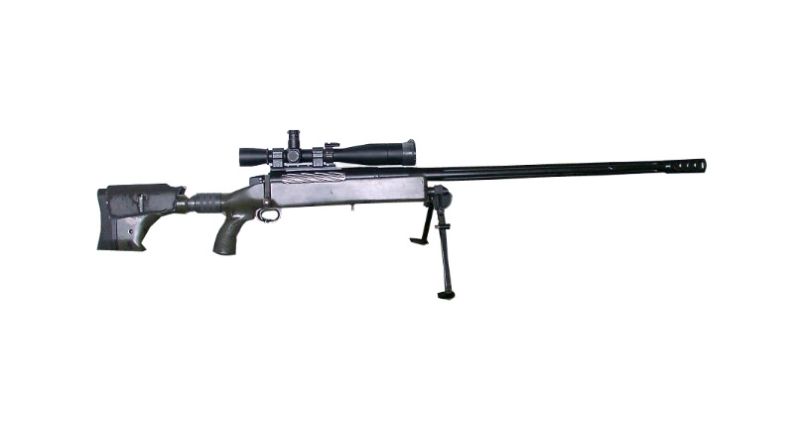
Wikipedia
The McMillan TAC-50 sniper rifle, developed by the McMillan Brothers Rifle Company, is a long-range anti-material and sniper rifle. Chambered in the powerful .50 BMG cartridge, it is known for its long-distance accuracy and has been used to set and hold the record for the longest confirmed sniper kill in combat. The TAC-50 has seen service with several military forces, most notably with the Canadian Forces, where it gained fame for its effectiveness in the Afghanistan war. Its precision and power make it ideal for engaging human targets and material targets at extreme distances.
Steyr SSG 69
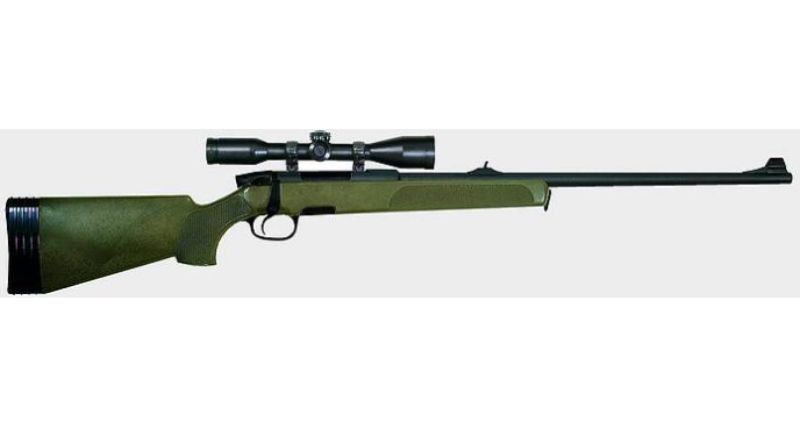
Wikipedia
The Steyr SSG 69, introduced by Steyr Mannlicher in 1969, was one of the first sniper rifles designed specifically for military and police forces rather than adapted from existing hunting rifles. Its innovative features, such as a cold hammer-forged barrel for improved accuracy and durability, set new standards for precision shooting. Chambered in 7.62×51mm NATO, the SSG 69 has been widely adopted worldwide for its reliability and performance in a compact package. Its success paved the way for future generations of sniper rifles, influencing designs and standards in the field.
L115A3/AWM (Arctic Warfare Magnum)
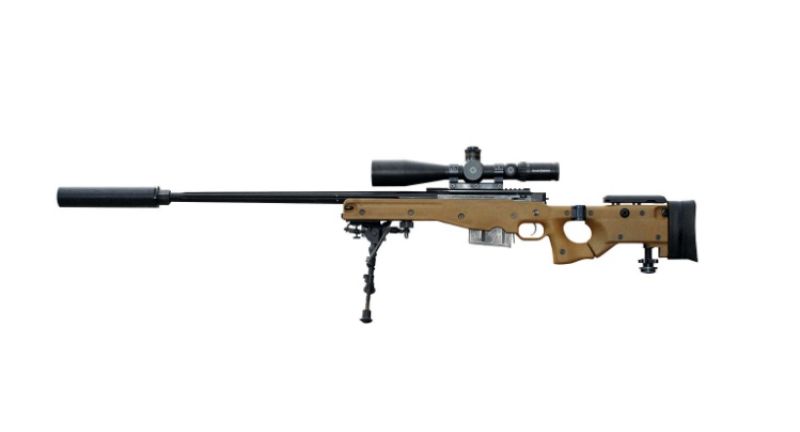
Wikipedia
The L115A3, a variant of the Arctic Warfare Magnum designed by Accuracy International, is renowned for its long-range precision. It was adopted by the British Army in 2008, chambered in .338 Lapua Magnum, a caliber chosen for its long-range capabilities and superior stopping power. The rifle has seen action in Afghanistan, where it gained notoriety for its effectiveness. It holds the distinction of being used for one of the longest recorded sniper kills in history, at a distance of 2,475 meters.
FN Ballista
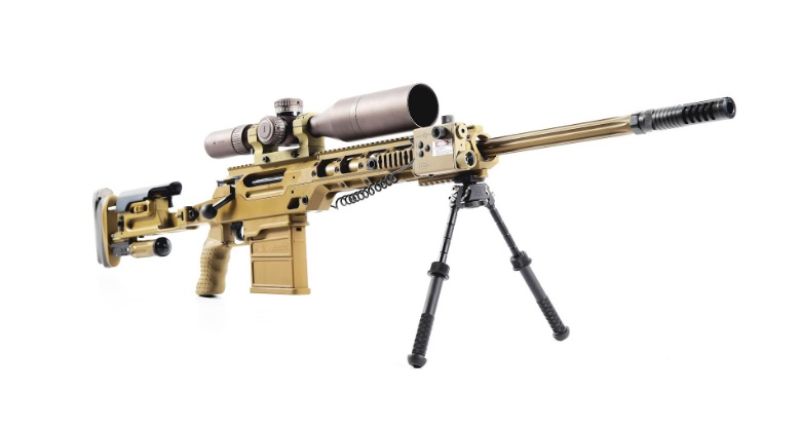
Proxibid
Developed by FN Herstal, the Ballista is a modular, bolt-action sniper rifle offering remarkable versatility and precision. Introduced in the 2010s, it is designed for adaptability, allowing operators to switch between calibers such as .338 Lapua Magnum, .300 Winchester Magnum, and 7.62×51mm NATO to meet various operational requirements. Its advanced ergonomics and user-friendly design make it a favorite among special forces and law enforcement units for long-range engagements. The Ballista represents modern sniper rifle technology, emphasizing modularity and precision.
Remington MSR (Modular Sniper Rifle)
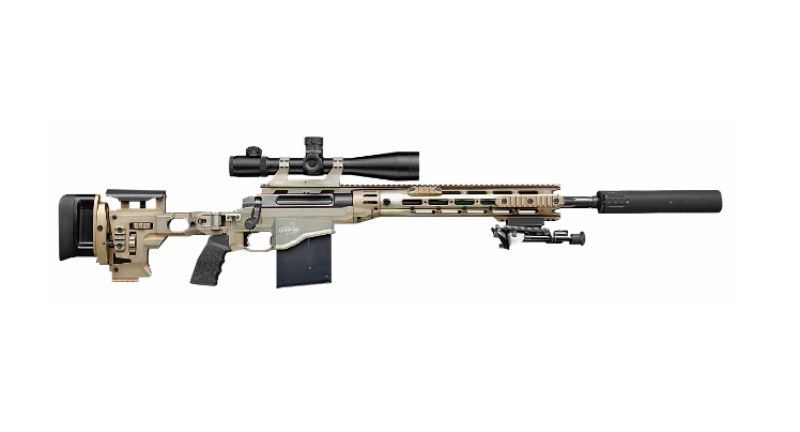
Wikipedia
The Remington Modular Sniper Rifle, or MSR, was designed in response to the U.S. Special Operations Command’s Precision Sniper Rifle program. Its modular design allows for rapid caliber changes in the field, offering flexibility across .338 Lapua Magnum, .300 Winchester Magnum, and 7.62×51mm NATO. Introduced in the early 2010s, the MSR combines accuracy, reliability, and adaptability, featuring a folding stock and adjustable cheekpiece for shooter comfort. Its adoption and use in special forces units underscore its effectiveness in a variety of combat situations.
ASH-12.7
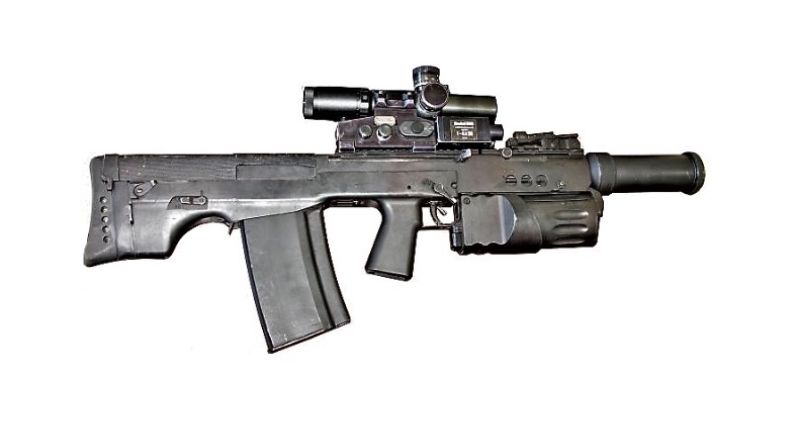
Wikipedia
The ASH-12.7 is a Russian heavy-caliber assault rifle designed for urban combat scenarios, offering significant stopping power at close to medium ranges. Developed for use by special forces, it fires a 12.7×55mm round, designed to defeat body armor and provide superior firepower in close-quarters battle. Introduced in the late 2000s, the ASH-12.7 stands out for its unique role, blending elements of sniper and assault rifle capabilities. Its use is somewhat specialized, catering to scenarios where overwhelming firepower and bullet penetration are critical.
PGM Hecate II
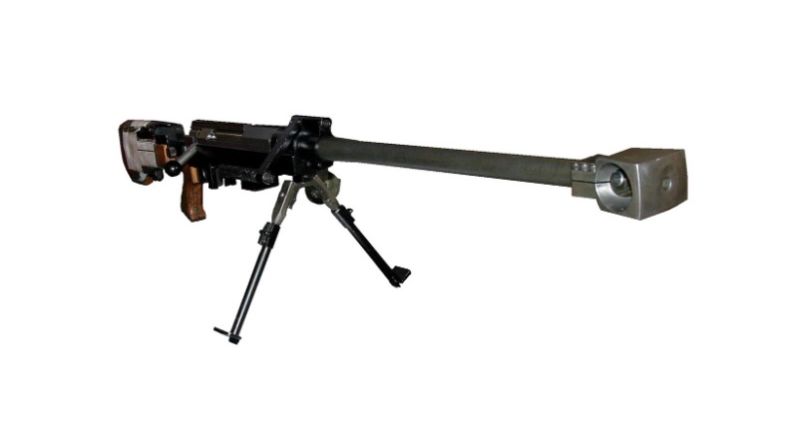
Wikipedia
The PGM Hecate II is a French-designed sniper rifle, named after the Greek goddess Hecate, and is the standard heavy sniper weapon of the French Army. It is chambered in .50 BMG, making it capable of anti-material duties and long-range precision engagement. Introduced in the 1990s, the Hecate II is known for its ruggedness and reliability under various environmental conditions. Its deployment in numerous military and peacekeeping operations worldwide has proven its effectiveness as a top-tier long-range sniper rifle.
AI AX50
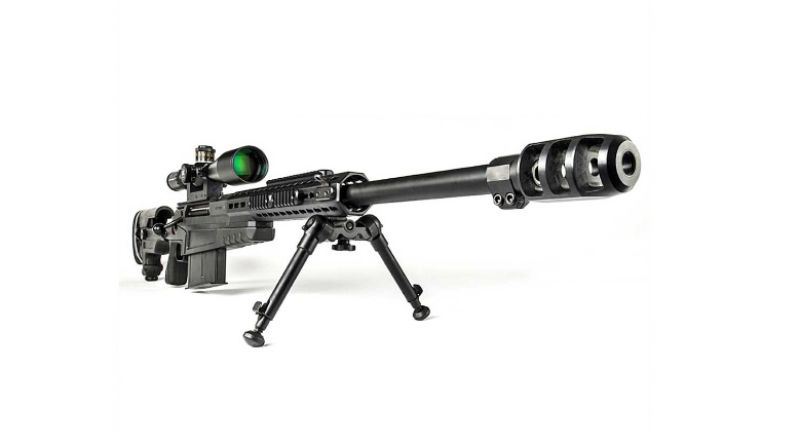
Stratton Technologies
The Accuracy International AX50 is a newer generation bolt-action rifle, building on the legacy of the Arctic Warfare series but chambered for the .50 BMG cartridge, designed for long-range precision and anti-material roles. Its introduction reflects ongoing advancements in sniper rifle technology, combining exceptional accuracy with the capability to engage a wide range of targets effectively. The AX50 features a high degree of modularity and ergonomic design, enhancing shooter comfort and accuracy. It’s used by several elite military units worldwide, valued for its performance and reliability.
Sako TRG-42
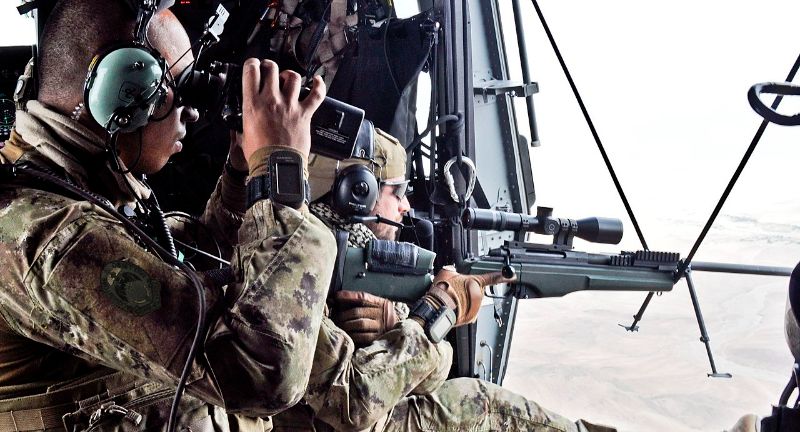
Wikipedia
The Sako TRG-42, developed by the Finnish company Sako, is a bolt-action sniper rifle renowned for its accuracy and versatility. Chambered primarily in .338 Lapua Magnum, it is designed for long-range precision shooting. Since its introduction in the 1990s, the TRG-42 has been adopted by numerous military and law enforcement agencies around the world, praised for its reliability, ruggedness, and superior ballistic performance. Its ergonomic design and modularity make it a popular choice for precision marksmen in a variety of operational contexts.
Zastava M93 Black Arrow
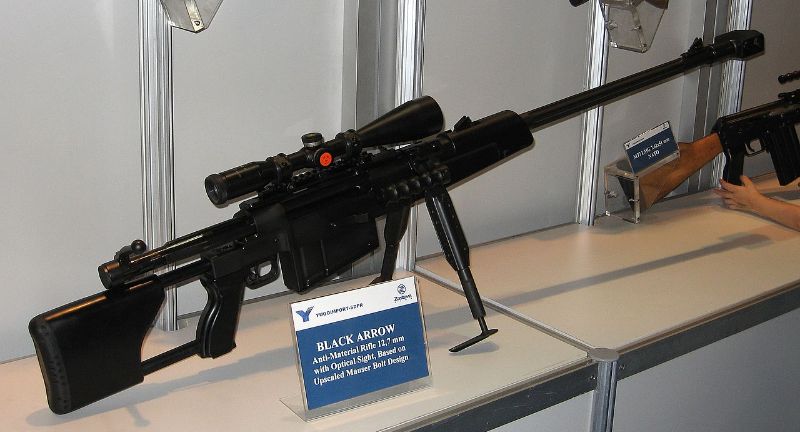
Wikipedia
The Zastava M93 Black Arrow is a Serbian-made bolt-action sniper rifle, designed for long-range engagement and anti-material roles. Chambered in either .50 BMG or 12.7×108mm, the M93 is known for its power and precision at extreme distances. Introduced in the 1990s, it has been used by several countries for military and special operations, showcasing its capability in various environmental conditions. The Black Arrow’s rugged design and effectiveness in engaging a wide range of targets make it a valuable tool for long-range sniping and anti-material tasks.
Conclusion
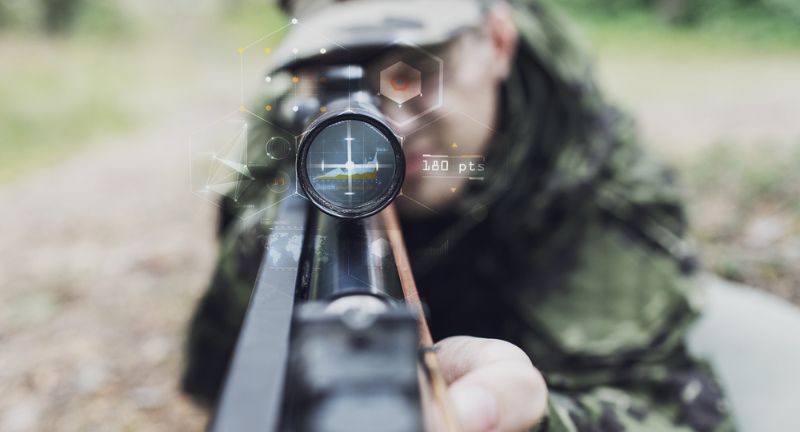
Shutterstock
The evolution of sniper rifles from basic firearms to sophisticated tools of war reflects a continuous quest for precision, range, and reliability on the battlefield. These 15 deadliest sniper rifles, each with their own storied pasts and technological breakthroughs, underscore the strategic importance of long-range marksmanship in modern combat scenarios. Through their lenses, history has been shaped by the hands of those skilled enough to wield them with deadly accuracy.
As technology advances, so too will the capabilities of these remarkable weapons, ensuring their place in the annals of military history and their ongoing role in defining the future of warfare.
More From Body Cams+
-


Swimmers Rescued from North Jetty Rocks at Fort Pierce Inland…
-


Tampa Police Search For Suspect Caught On Camera Using Credit…
-


LVMPD Officer Describes Saving Motorist’s Life With The Help Of…
-


‘Good Samaritans help driver suffering medical episode’
-


Bear makes its way through neighborhood before walking into an…
-


Capture of Atlanta Hospital Shooting Suspect. Deion Patterson is Accused…
-


Rescue of elderly woman with broken hip trapped in her…
-


Escaped Inmate Serving Time For A 2007 Vegas Bombing Is…
-


Boyfriend Of New Mexico Teen Who Gave Birth To Full…
-


Bear Cub in Grocery Store Captured After Brief Chase in…
-


West Allis Fire Department Saves 3-Year-Old From Burning Building
-


NYPD: Burglars use bolt cutters to enter basement, take bike…
